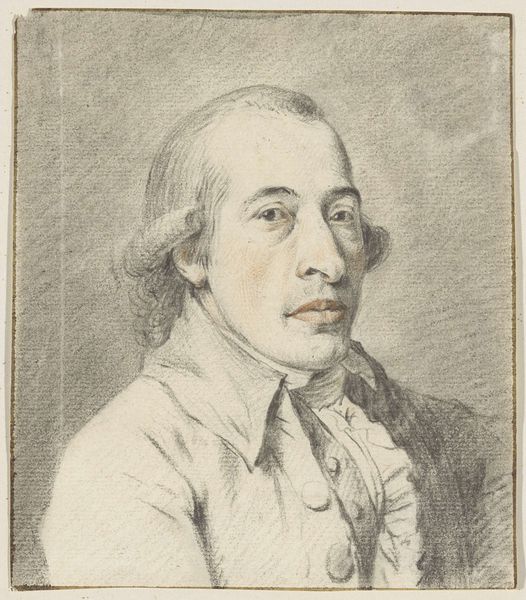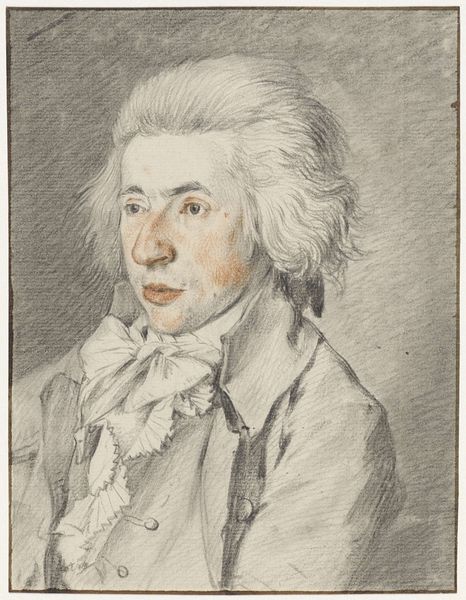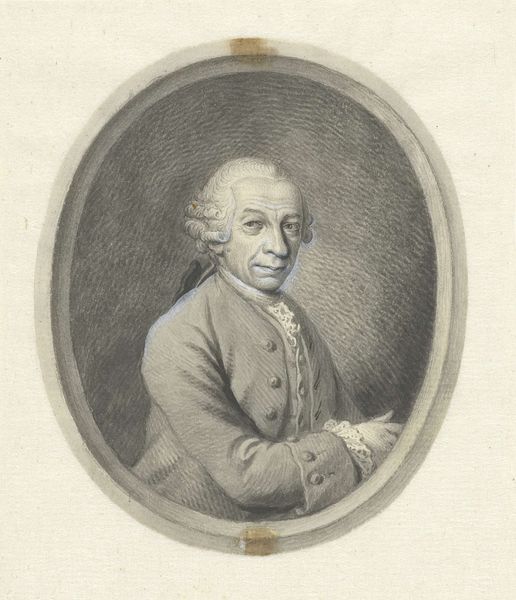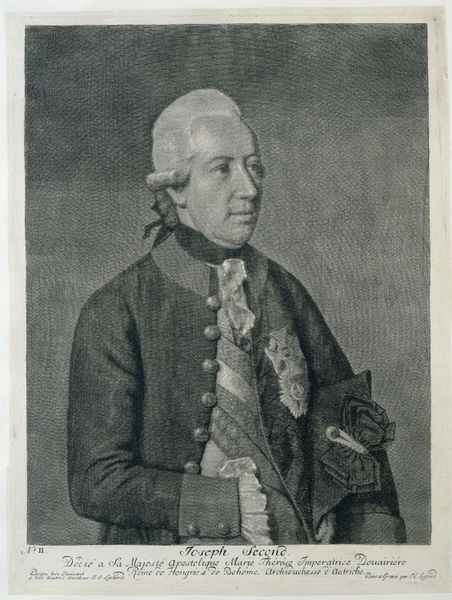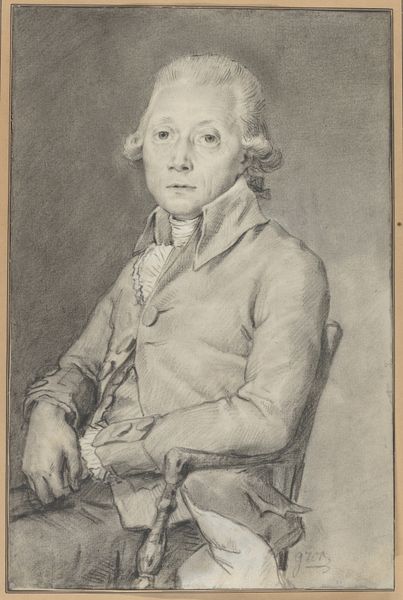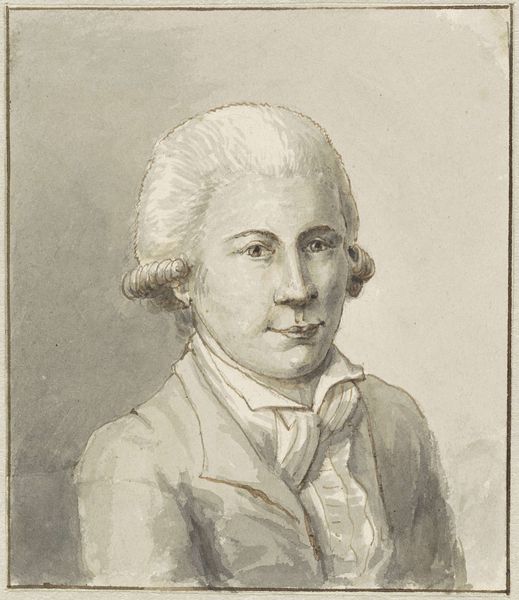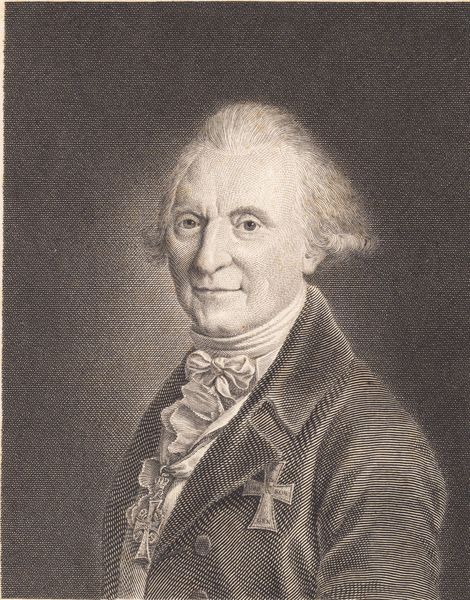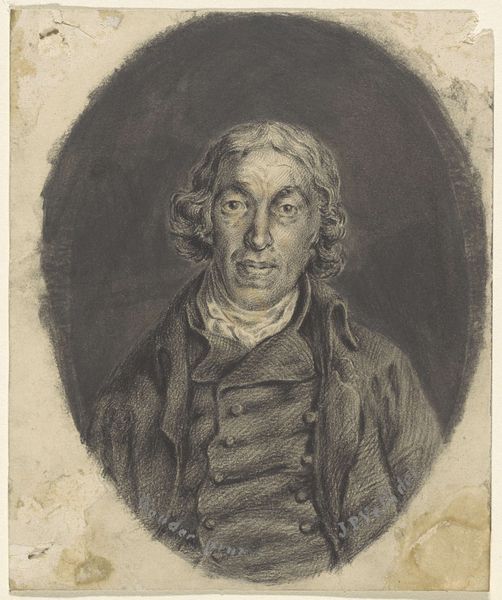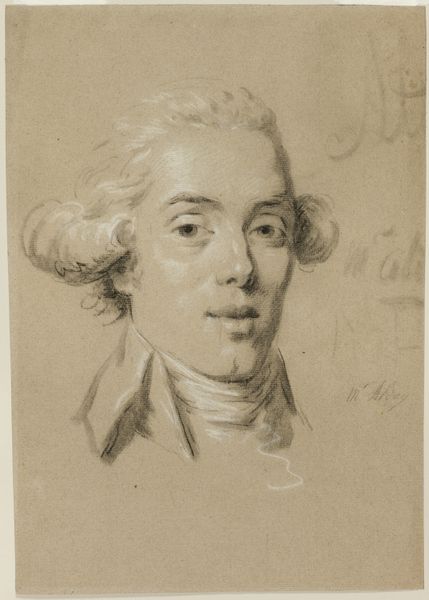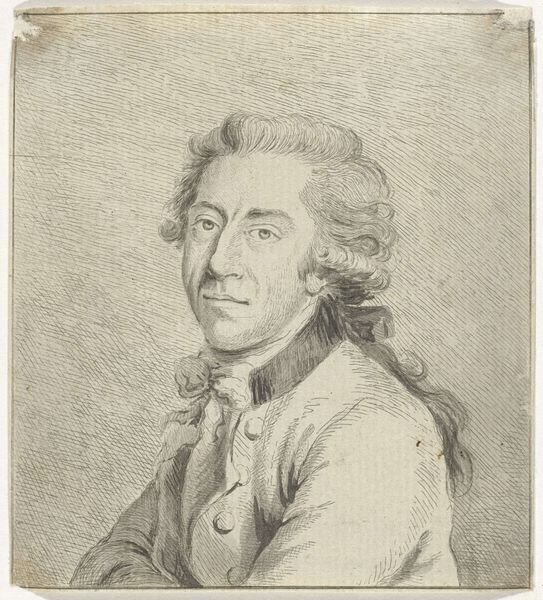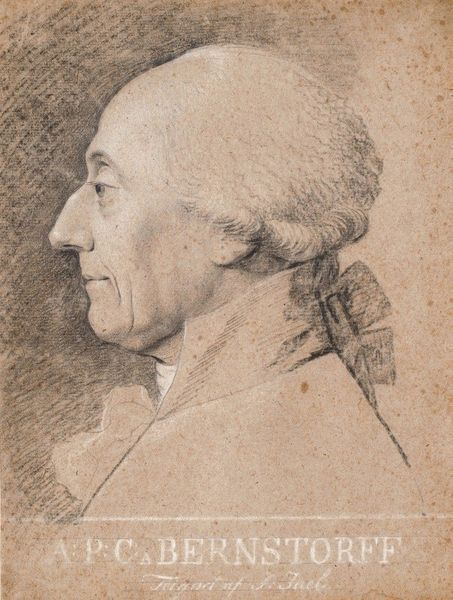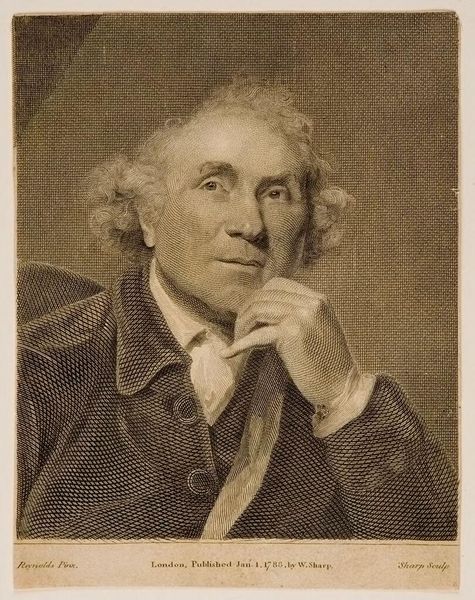
drawing, pencil
#
portrait
#
drawing
#
neoclacissism
#
figuration
#
pencil
#
academic-art
Dimensions: height 152 mm, width 126 mm
Copyright: Rijks Museum: Open Domain
Editor: We are looking at Wybrand Hendriks’ pencil drawing, “Portret van Jacobus Perkois,” made sometime between 1754 and 1831. The delicacy of the medium contrasts with the detail, doesn't it? How do you see its formal qualities shaping the portrait? Curator: Indeed. Let's consider how Hendriks utilizes line and value. Observe the precise, almost scientific delineation of form. The face, for example, is built through subtle gradations, with shadow employed not merely to represent darkness but to sculpt and define. Note also the linear rhythm in the sitter's ruffled shirtfront. This creates a visual texture that offsets the smooth, almost stark, expanse of his coat. What strikes you about this interplay? Editor: The shirt does draw my eye. And, now that you mention it, there's not a strong focal point. Is that intentional, moving us around the piece to fully engage? Curator: Precisely. This lack of a dominant element directs our gaze across the entire picture plane. Hendriks denies the conventional hierarchy inherent in portraiture. He transforms it into an exploration of surface and form, dissolving any fixed meaning into a study of tonal variation. What interpretation do you draw? Editor: I see a focus on observation more than the man himself, almost like a still life but with a person as the subject. Thanks! Curator: A valuable distinction. Understanding formal elements enables deeper insight. This focus shows the capacity of line and tone, how abstraction makes its own impact on this genre and how our observation translates to a complete understanding.
Comments
No comments
Be the first to comment and join the conversation on the ultimate creative platform.
